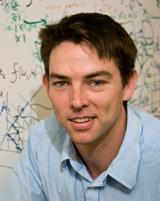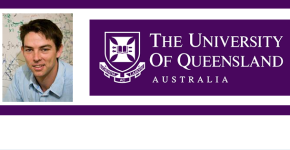 Do we need to update our standards of measurements?
Do we need to update our standards of measurements?
Thomas Stace, associate professor in the school of mathematics and physics at the University of Queensland, informs us of the way he and his colleagues are re-thinking these long held standards.
Dr Stace completed his PhD at the Cavendish Lab, University of Cambridge in the UK on quantum computing, followed by postdoctoral research at the Department of Applied Mathematics and Theoretical Physics, also at Cambridge. During this time he was a fellow at Queens’ College, known for its eclectic mix of medieval, tudor and victorian architecture. He has been a researcher at the University of Queensland since 2006, firstly on an ARC Postdoctoral Research Fellowship, then on an ARC Research Fellowship, and was awarded an ARC Future Fellowship in 2014.
His research has largely focused on applying methods from quantum optics to solid state devices for use in quantum information applications, and more recently on error correction protocols. He also works on high precision measurement in collaboration with experimental colleagues at UWA, in a project whose ultimate aim is to contribute to the international definition of Boltzmann’s constant, and some biophysics.
Dr Stace also consults for UniQuest, UQ’s commercial arm, on scientific and technical matters.
New Standards of Measurements

How do people agree on how much they are talking about?
Historically, quantities were measured by convenient but variable references, including fingers, hands and feet.
But these rough rules of thumb are naturally ambiguous. This has long been an important commercial issue: 800 years ago the Magna Carta instituted standardised units of volume, length and weight throughout England.
Standard units were originally defined by a reference artefact. For instance, a platinum mass in Paris defines the primary kilogram, with derivative copies stored in labs around the world.
There are problems with this system: artefacts are difficult to transport, and they vary over time.
Currently, the unit for temperature, called the Kelvin, is defined in terms of “Vienna Standard Mean Ocean Water” — peculiar stuff, given that Vienna is the capital of land-locked Austria.
So scientists have been working to redefine the system of units, including the Kelvin, in terms of universally available quantities, such as the speed of light or the frequency of certain atoms.
The approach my colleagues and I took to redefining the Kelvin is based on Doppler thermal spectroscopy of an atomic gas.
An example of the Doppler effect is the audible change in frequency of a siren as it passes by.
Atoms in a gas zip around, and the higher the temperature, the larger their typical velocity.
Using very precise lasers we measured the Doppler shift of the atomic spectrum to determine the atomic velocities and thus the temperature of the gas
Importantly, there are no unknown calibration factors in our technique; we rely only on universal constants like the atomic mass and the speed of light.
Furthermore, our approach scales from well below freezing to the interior of furnaces.
One of the challenges of this technique is that the laser light used to probe the atoms also changes their internal state. Fortunately we are able to account for these small but significant changes using quantum theory.
Strengthening our system of units is important: it is the foundation on which science and technology are built.
